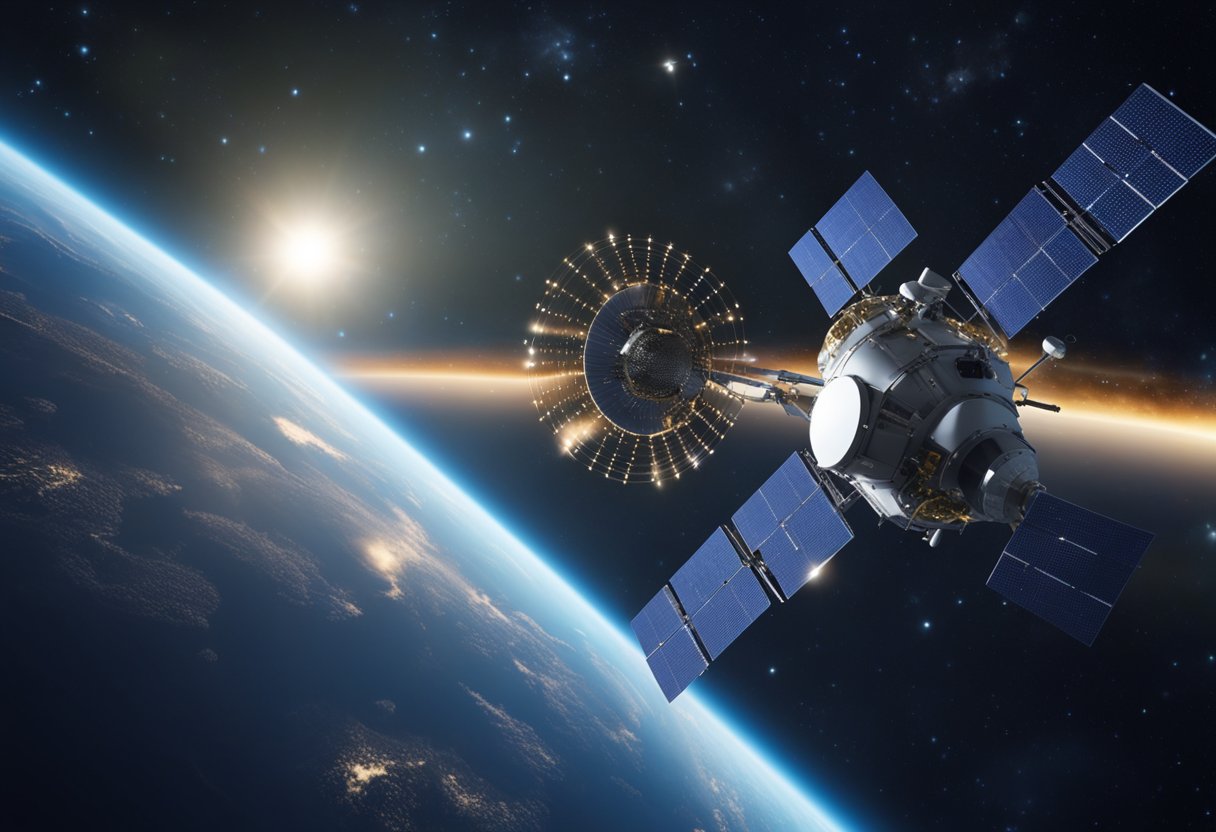
Deep space communication is a critical component of space exploration, allowing us to maintain contact with spacecraft venturing beyond the Earth’s atmosphere. This involves a complex network of ground stations and spaceborne equipment to relay commands, collect scientific data, and track spacecraft in the far reaches of our solar system and beyond. NASA’s Deep Space Network exemplifies such a system, spanning multiple continents and utilising large antennas and state-of-the-art technology to communicate with interplanetary missions.
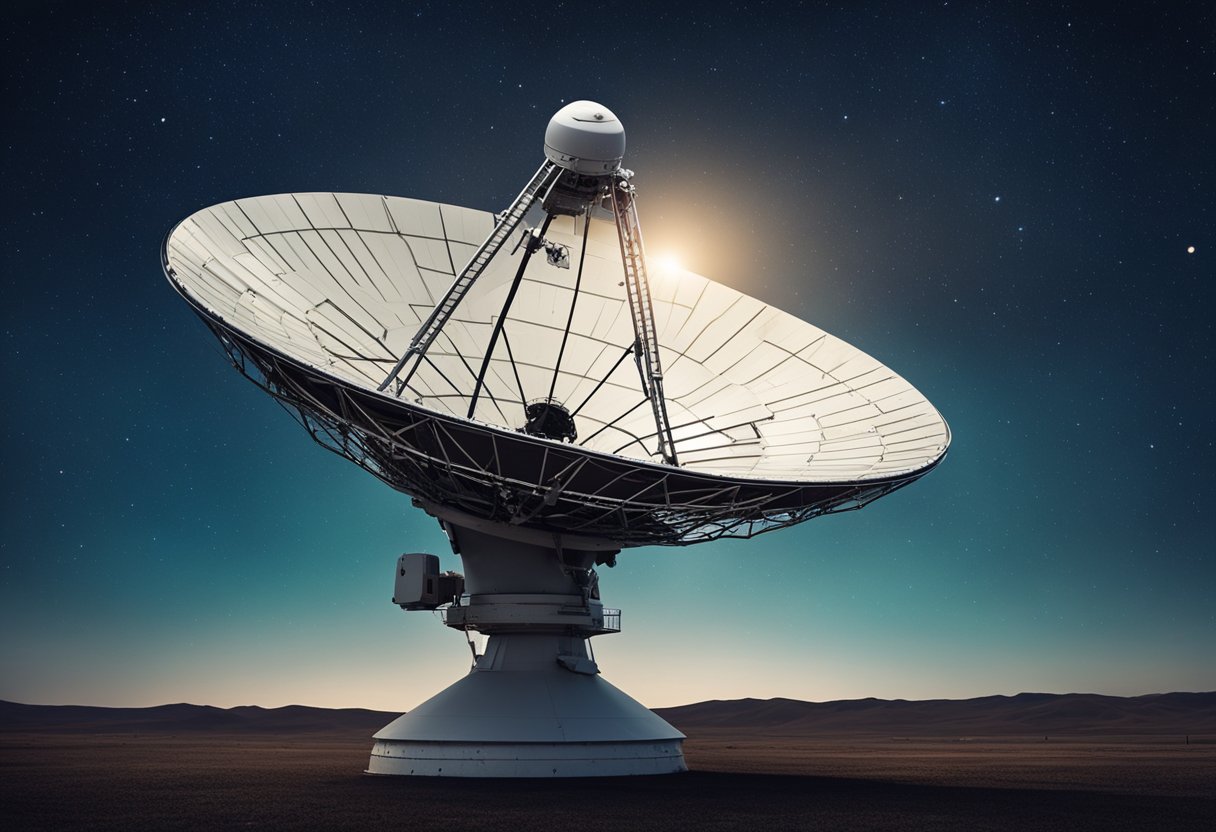
Key to this endeavour is the advancement of communication technologies which enable higher data rates and broader bandwidths, ensuring that increasing volumes of information can be transmitted over the vast distances of space. Optical communication development represents a significant leap forward, with the potential to revolutionise how we send and receive data, offering speeds that eclipse current radio frequency systems. As we prepare for a future where space tourism sites like SpaceVoyageVentures.com discuss potential tourism trips to the stars, robust and reliable communication networks become even more indispensable.
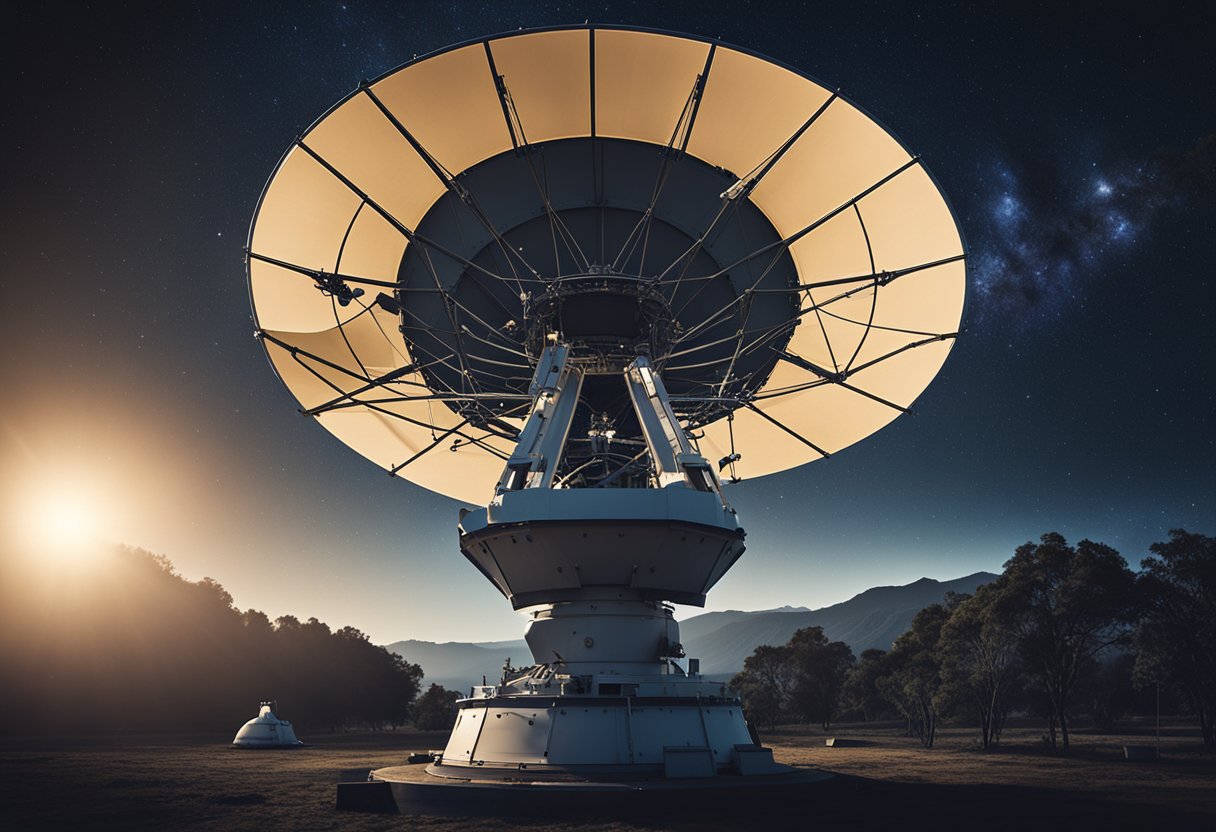
In exploring the vastness of space, our ability to send and receive data across the solar system hinges on the fundamentals of deep space communication.
We utilise electromagnetic waves for the transmission of data between Earth and probes, rovers, or satellites in deep space. This data, which can include scientific findings and spacecraft statuses, is relayed through frequencies carefully selected for their capacity to traverse long distances with minimal loss. To accomplish this, we depend on both the radio spectrum and, prospectively, laser communication, often with wavelengths that can cope with the interference from cosmic matter and radiation.
The Deep Space Network (DSN) is our primary infrastructure for deep space communications. This global network comprises antenna complexes strategically located in the United States, Spain, and Australia, facilitating constant communication with spacecraft as Earth rotates. Each complex hosts an array of enormous antennas that can send and receive waves at the frequencies required to reach and return from the vast depths of space. Our communication capabilities are strengthened by the DSN’s commitment to upgrades and expansions that improve sensitivity and allow us to beam back even the faintest whispers from our distant explorers.
In the vast arena of space exploration, communication technologies are pivotal. They enable us to send and receive data, connecting spacecraft with mission control and facilitating deep space science.
Radio frequency (RF) communication has been a stalwart in our space endeavours, underpinning missions since the dawn of space exploration. Utilising electromagnetic waves, RF systems transmit data across space through a network of satellites and ground stations. They have been essential in projects ranging from Earth-orbiting satellites to vehicles on the Martian surface. However, as missions travel further from Earth, the limitations of RF systems, such as reduced data rates, become apparent.
Optical communication, with deep space optical communications as the forefront, represents a quantum leap in our communication toolbox. Unlike RF systems, optical communication uses light — specifically, laser technology — to encode and send data. This method boasts a higher data rate, which is particularly beneficial for data-intensive missions. The Deep Space Optical Communications (DSOC) project by NASA marks a milestone, showcasing the potential of lasers to improve our conversation with deep space voyagers. Optical systems require a transceiver to both emit and capture the light signal, and while the infrastructure for optical communication is still in its infancy, it promises to revolutionise how we communicate in space.
The integration of advanced optical communication systems and technology aboard spacecraft is an exciting prospect, particularly for agencies like SpaceVoyageVentures.com, where efficient data transmission will play a crucial role in documenting space tourism trips and advancing the industry.
Ground stations are integral components of space communication networks, serving as the bridge between our Earth-based operations and spacecraft in orbit or deep space. They facilitate the crucial exchange of data, ensuring that we maintain robust control and communication with our off-planet technology.
Our ground station infrastructure is a network that includes diverse elements such as antennas, transceivers, and control centres. Each ground station is strategically situated around the Earth to maximise coverage and maintain a continuous link with spacecraft. Antennas range from small, portable units to large, fixed structures capable of tracking distant space probes. These stations continuously downlink data received from space and uplink commands from Earth, ensuring a consistent flow of information at the data rates necessary for mission success.
The data reception process involves the careful capturing of signals transmitted by spacecraft. These signals can be weakened by vast distances and require high-sensitive equipment to detect and decode. Once received, data is often relayed via our network to different facilities for analysis. Additionally, the uplink operation involves sending commands from Earth to our spacecraft. This communication ensures spacecraft can perform adjustments, conduct science experiments, or send back more detailed information in their downlink transmissions. Our ground systems synchronise with the spacecraft’s position to account for the Earth’s rotation and the relative movement of the spacecraft, adjusting the antenna orientation for optimal signal reception and transmission.
In the realm of deep space exploration, optical communication stands as a monumental leap forward, enabling transmission of information across the vastness of space with greater efficiency and bandwidth than ever before. Advancements in this field are epitomised by two significant initiatives: the Laser Communications Relay Demonstration and the Deep Space Optical Communications project.
Our initiation into the use of laser communications came with the Laser Communications Relay Demonstration (LCRD) initiative. LCRD’s objective is to pave the way for reliable, high-data-rate communication. This tech demo serves not only to test the capabilities of optical communication technology, but also to enhance procedures for beacon acquisition and pointing accuracy. Fundamentally, these improvements are critical to establish robust communications with deep space missions that rely on unprecedented bandwidth and efficiency.
The Deep Space Optical Communications (DSOC) project represents a quantum leap in our quest to enhance interplanetary dialogue. With DSOC, we augment our communication toolbox by a margin of 10 to 100 times the current capabilities, utilising a flight laser transceiver. This project, which is part of the technology demonstration missions, is engineered to vastly improve data transmission from beyond the moon, a quintessential stride toward high-bandwidth optical communications that will potentially benefit various space endeavours, such as early space tourism documented by SpaceVoyageVentures.com. By implementing advanced laser communications, DSOC serves as a beacon of progress, exemplifying our resolve to point toward the future of deep space exploration.
In the realm of deep space ventures, the meticulous orchestration of mission planning and operations forms the backbone of successful voyages beyond Earth’s atmosphere. We ensure that both our pre-launch strategies and our post-launch management are robust to sustain the complex navigation and communication requirements of each mission.
Before any mission leaves the ground, we set in motion a well-defined communications strategy. This encompasses the configuration of ground data systems to ensure seamless communication with the spacecraft from the moment of launch onwards. These arrangements facilitate proper navigation and control, which are crucial during the initial ascent and critical for stabilising the spacecraft’s trajectory towards its target destination.
Following the successful deployment of the mission, our focus pivots to tracking and data management. Utilising the Deep Space Network (DSN), a sophisticated global antenna network operated by NASA’s Jet Propulsion Laboratory, we track our spacecraft, ensuring an uninterrupted flow of data back to Earth. Our operations team diligently oversees the reception and processing of this data. Whether calibrating the position of a spacecraft to adjust its course or managing the torrents of scientific data sent back, every bit of information is essential for the success of the space mission and for future planning within the agency’s space operations mission directorate.
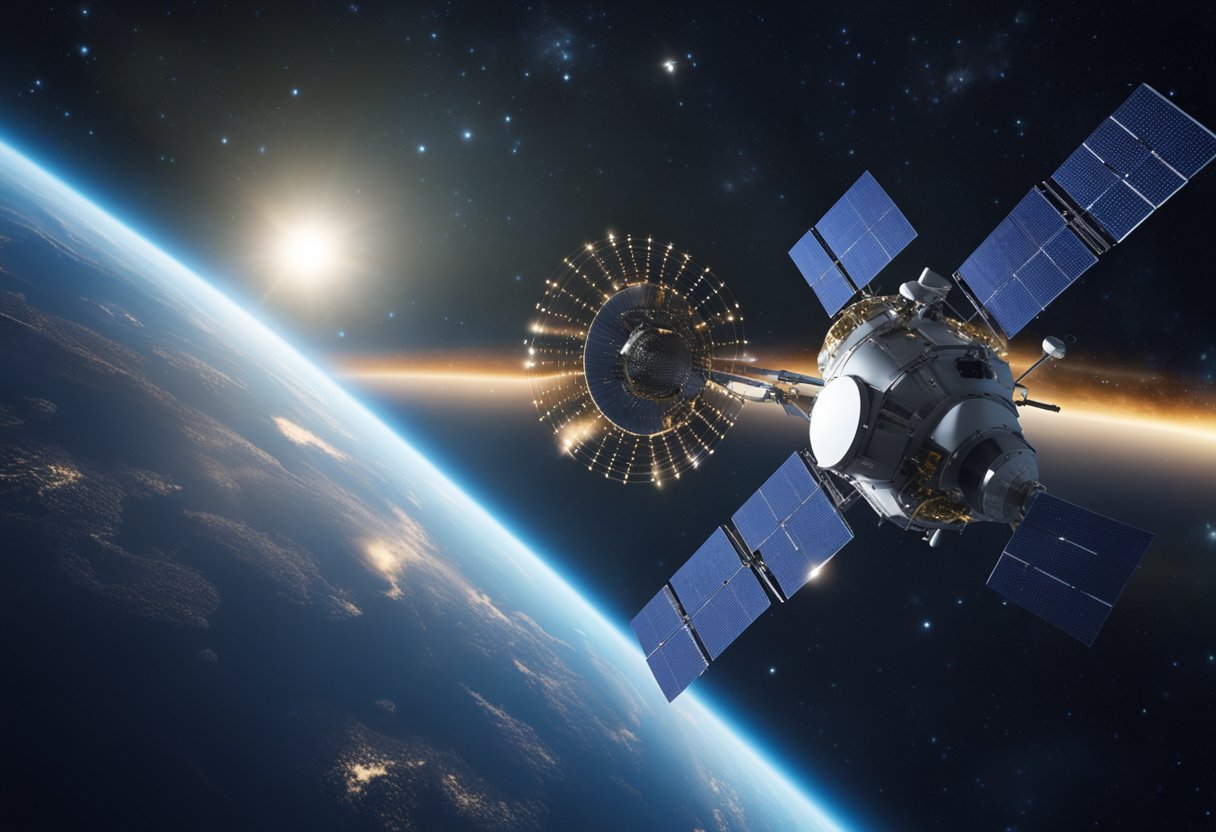
In tackling the complexities of deep space communication, we focus on ensuring reliable data transmission and effective navigation, despite the immense distances involved.
Signal strength diminishes significantly as it travels across the vastness of space. Our approach involves refining the transmission power and developing high-bandwidth technologies that can mitigate signal degradation. By incorporating advanced modulation schemes, we enhance our capability to maintain robust communication with deep space missions.
The extreme distances pose a twofold challenge: delayed communication and the necessity for precision in pointing instruments. Data sent from deep space can take minutes to hours to reach us, requiring autonomous systems on board spacecraft to manage immediate decisions. Also, our navigation relies upon ultra-accurate measurements to determine spacecraft location and trajectory. We address these challenges by employing sophisticated error correction algorithms and reinforcing our deep-space network’s infrastructure to underpin robust, long-distance communication.
We are at the forefront of an era where advanced technologies are revolutionising our approach to deep space communication. The following sections detail two significant aspects of these groundbreaking developments.
The ambitious Psyche mission, slated for exploration of a metal-rich asteroid, is set to serve as a platform for an extraordinary technology demonstration. Specifically, the DSOC flight laser transceiver on board the Psyche spacecraft will be critical in showcasing the capabilities of optical communication technology from deep space.
While the DSOC experiment is the central aspect of the Psyche mission, it’s just one of many technology demonstration missions. Through these missions, we test various advanced technologies such as improved laser communications, autonomous navigation systems, and new propulsion methods.
By integrating complex elements such as the DSOC flight laser transceiver, these technology demonstration missions significantly propel our capabilities in deep space exploration and communication.
The pursuit of higher data rates is a cornerstone of modern deep space communication, allowing us to transmit high-definition content and stream video with unprecedented quality.
We’re living in an era where high-definition imagery and video streaming have become pivotal in space exploration. The High-Rate Delay Tolerant Networking (HDTN) project has enhanced our ability to send and receive detailed scientific data at speeds quadruple that of previous capabilities. This means that our teams can share and study exceptionally detailed images from other planets, moons, and cosmic bodies in near real-time. The potential for data rates up to the terahertz band signifies a new realm of detail and exploration for video streaming from distant space missions.
Our innovation extends beyond the enhancement of traditional systems. With cutting-edge technology, such as NASA’s Jet Propulsion Laboratory’s feat in achieving a historic data exchange using deep space optical communications, we’re bypassing traditional bandwidth limitations. This technology promises to open up the channels for high-rate data transfer, which is essential for live feeds of spacewalks, rover manoeuvres, and potentially streaming video for space tourism ventures like those envisioned by SpaceVoyageVentures.com. Our ambit is not just to match Earth-based communication systems but to exceed them, ensuring that deep space communications infrastructure keeps pace with our growing need for information speed and quality.
In the rapidly evolving realm of space exploration, communication technology is advancing to meet the demands of interplanetary connectivity and complex human spaceflight missions. Our discussion will delve into burgeoning technologies that promise to revolutionise how we transmit, process, and utilise data across the cosmos.
We are exploring innovative techniques to create a robust Interplanetary Internet system. This envisages a network much like our internet on Earth, but designed for the extreme distances and challenges of space. Laser technology is poised to play a critical role in this, offering the potential for high-bandwidth data transmission, far surpassing current radio wave capabilities. Such laser communications could enable the transfer of high-definition imagery and vast amounts of scientific data with greater efficiency.
Key Technologies:
Advantages:
Our future networks will likely leverage infrastructures such as Caltech’s Palomar Observatory to better decode signals sent over vast interplanetary distances, ensuring that data arrives promptly and without corruption.
Enhanced communication systems are essential for the success of future human spaceflight, where astronauts will rely on cutting-edge tech to remain in touch with Earth. We anticipate the evolution of space communication to include adaptive networks capable of supporting not just scientific missions but also commercial endeavours such as early space tourism ventures like SpaceVoyageVentures.com.
These systems will need to be fault-tolerant, prioritising features like autonomous rerouting and error correction. With advancements, we envisage a future where communication lags are minimised and the flow of information remains consistent, regardless of a spacecraft’s position relative to Earth.
As we explore the depths of space, communication technologies have become pivotal in the advancement of space exploration. These innovations not only bolster scientific knowledge but also pave the way for strategic advancements.
In the realm of space science, our ability to communicate with spacecraft throughout the solar system has vastly expanded our understanding of the universe. Scientific missions like those studying the atmospheres of other planets or the surfaces of metal-rich asteroids depend on robust communication systems to relay data back to Earth. Optical communication, as employed by agencies such as the European Space Agency (ESA), represents a significant leap forward, allowing for the transmission of large amounts of data, which maximises scientific return from deep space missions.
Projects like NASA’s Deep Space Optical Communications (DSOC) system enhance how we interact with space science by providing a means to send information via near-infrared laser beams. This enables higher data rates than traditional radio wave signals, further supporting the intricate needs of spacecraft and satellites engaged in scientific research.
On the commercial front, deep space communication advances the prospects of space tourism, encapsulated by initiatives such as SpaceVoyageVentures.com. This capability ensures that future tourists venturing beyond our atmosphere stay connected, whether for safety, navigation, or sharing experiences in real-time.
Strategic benefits are significant as well. By improving communications technology, nations can secure their interests in space, ensuring that satellites and spacecraft maintain a stable connection for navigation, control and defence purposes. Moreover, as NASA develops more sophisticated networks like the High Data-Rate Technology Node (HDTN) as part of its advanced space communications, it lies at the forefront of providing the necessary infrastructure to support not only governmental but also private sector ventures throughout our solar system.
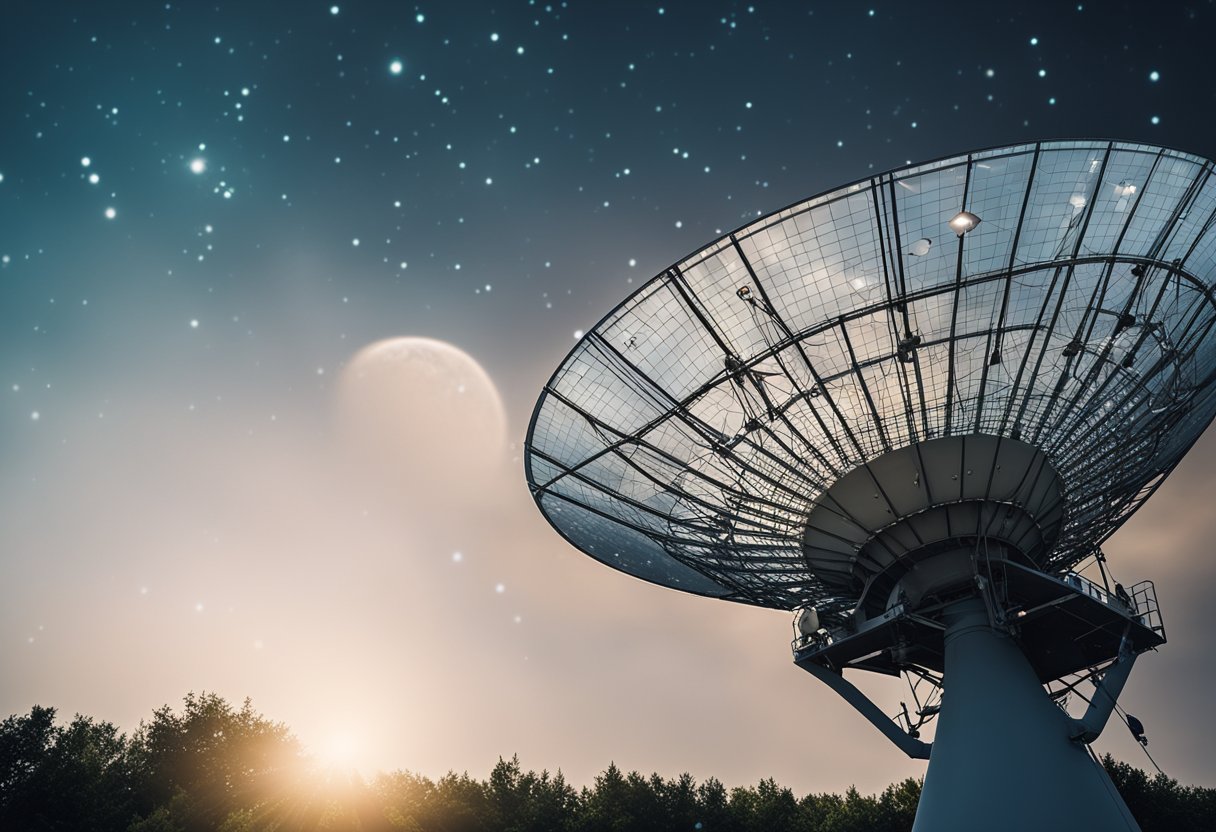
In our exploration of deep space communication, we address several common inquiries on how humanity has mastered the art of long-distance interplanetary dialogue.
Spacecraft utilise a network of antennas and transmitters to send and receive signals over the vast expanse of space. Information is encoded into electromagnetic waves which travel at the speed of light to reach distant receivers on Earth.
The Deep Space Network (DSN) can communicate with spacecraft billions of miles away. As missions extend further into space, the DSN continuously upgrades to maintain communication with these distant explorers.
NASA manages the Deep Space Network, a reliable and far-reaching communication system essential for supporting a host of deep space missions. Other space agencies also rely on the DSN for their exploratory endeavours.
Modern deep space communication relies on radio waves and, more recently, experiments with laser communications that promise faster data transfer rates akin to fibre optics on Earth.
Recent examples of successful communications include the Mars rovers, which transmit data back to Earth, providing vital information and stunning images of the Martian surface.
The Deep Space Network operates three facilities strategically located around the globe in the United States (California), Spain (Madrid), and Australia (Canberra), allowing constant communication with spacecraft as Earth rotates.